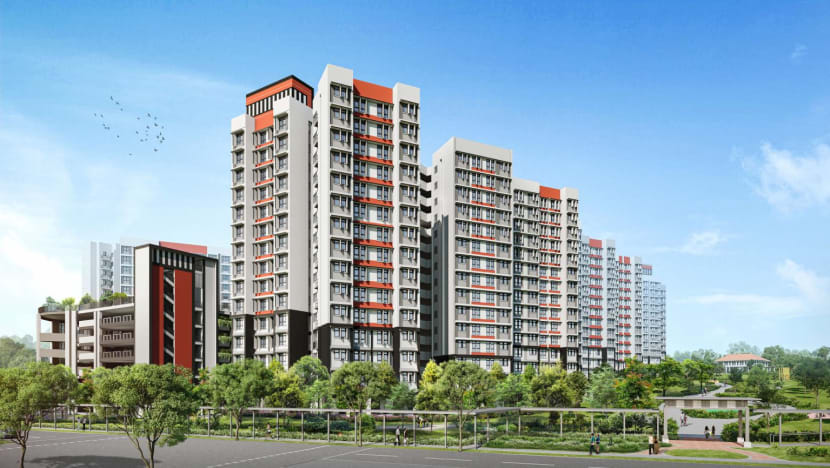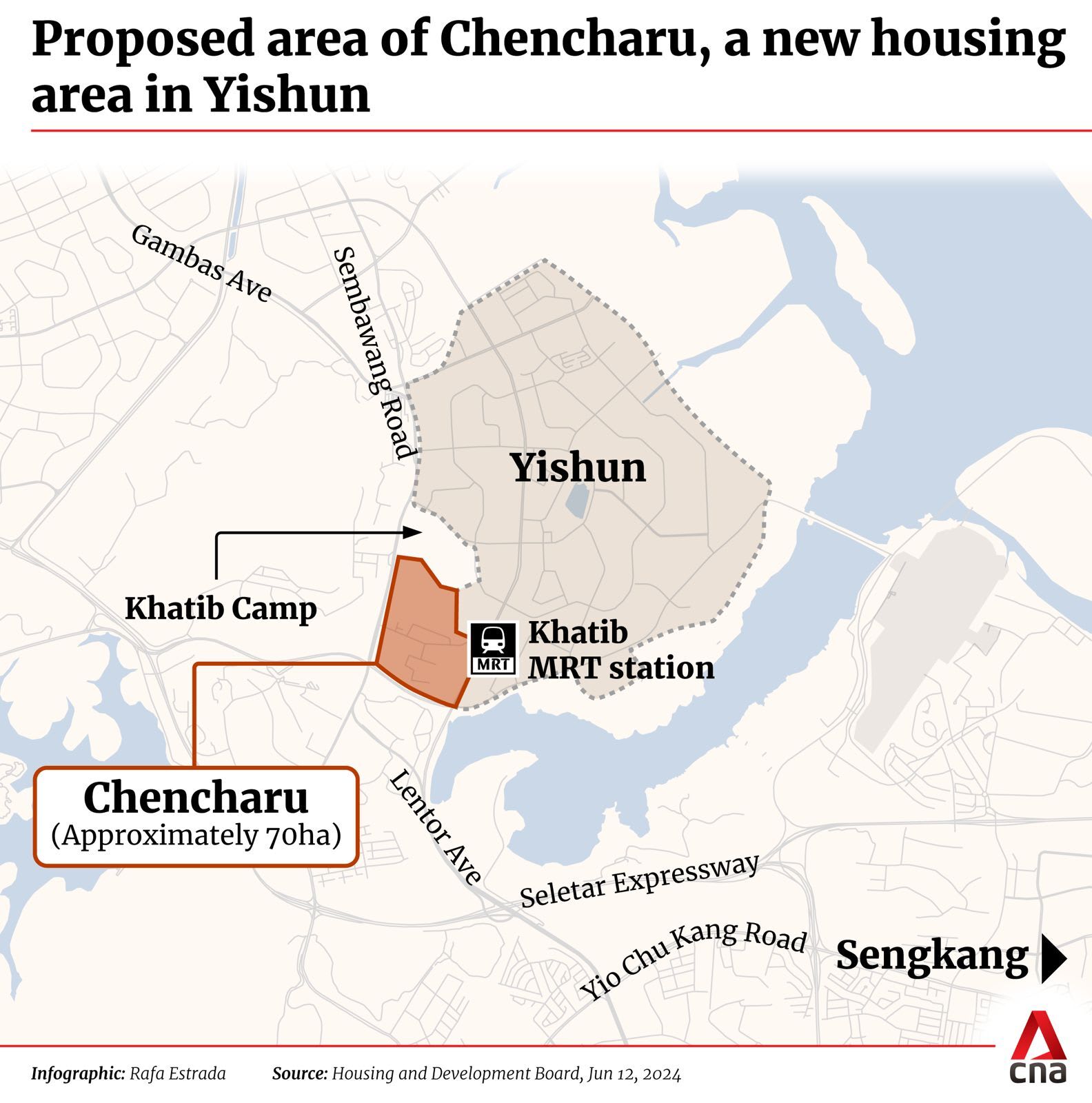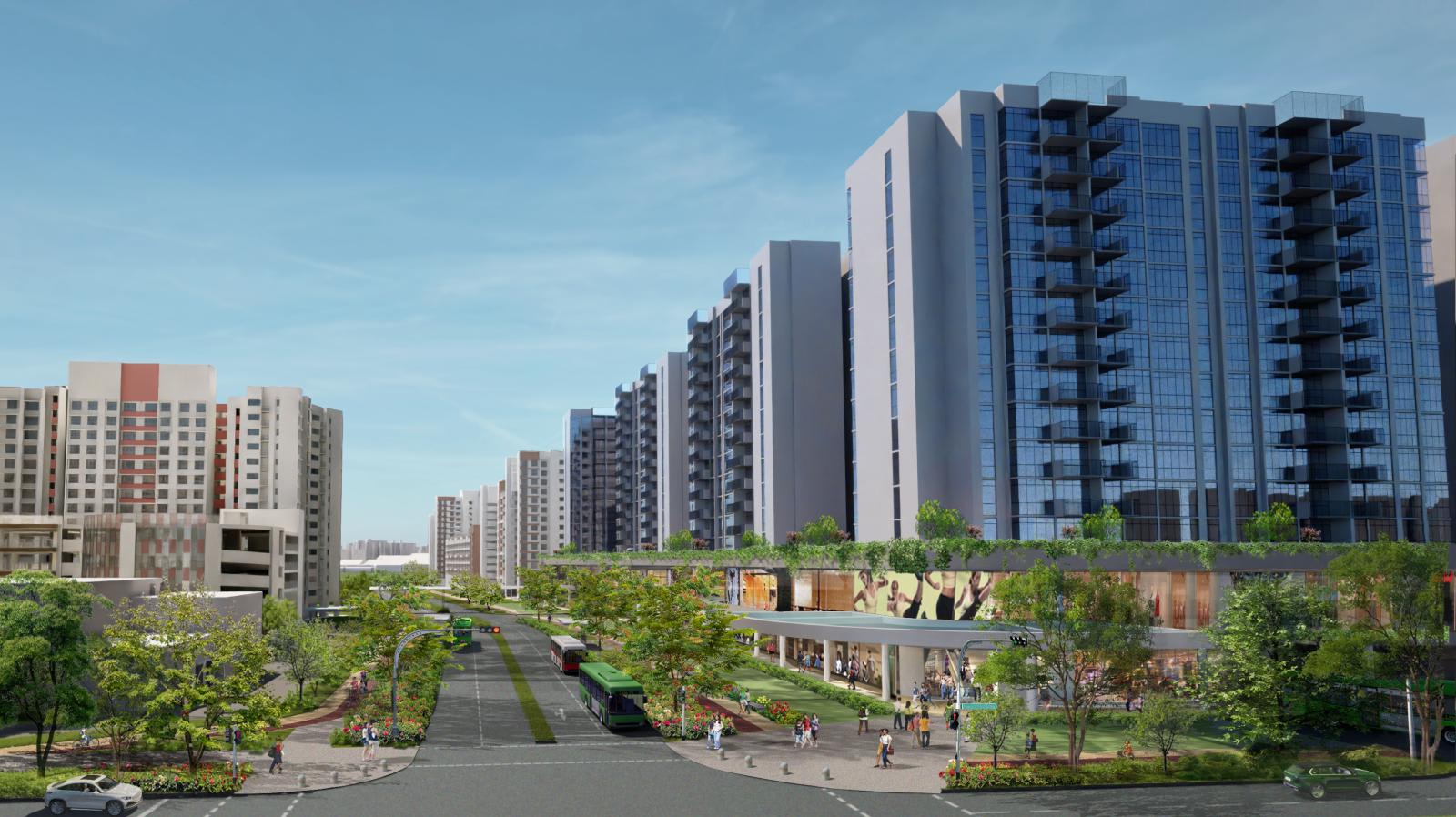Heritage elements, bus-only corridor: First look at plans for Chencharu, Yishun's new housing area
The first Build-to-Order project in Chencharu will be launched for sale in June, with about 1,270 units.

An artist’s impression of the first BTO project in Chencharu to be launched in June 2024. (Image: Housing and Development Board)

This audio is generated by an AI tool.
SINGAPORE: Chencharu, the new housing area in Yishun, will have a mixed-used integrated development comprising a new bus interchange, hawker centre and shops.
There will be a "bus-only corridor" and the design of the estate will feature elements that reflect the area's history and heritage.
Plans for the new housing area near Khatib MRT station were unveiled by the Housing and Development Board (HDB) on Wednesday (Jun 12), before Chencharu's first Build-to-Order (BTO) project is launched for sale later this month.
It was announced in March that about 10,000 homes will be built in Chencharu by 2040. There will be about 1,270 units in the first BTO project, comprising a mix of two-room Flexi to five-room flats.

Chencharu’s first BTO project draws inspiration from a piece of the site’s history - the approximately 100-year-old colonial-era bungalow along 50 Bah Soon Pah Road.
The bungalow was a plantation house, likely built in the early 1910s by the Bukit Sembawang Rubber Company. Several of its elements have been incorporated into the HDB blocks and facilities.
For instance, the BTO project’s red, black and white facade mirrors the colours of the bungalow. A black outline around the first few floors indicates how high above the ground the bungalow was.
Features of the bungalow will also be reinterpreted in the design of other facilities such as the landscape shelters, drop-off porch and precinct pavilion.
The bungalow itself will be adapted for community use within a new park. There will also be a heritage trail, featuring a series of gardens and storyboards.

Chencharu was home to plantations and farms in the 1900s before it was redeveloped for various uses.
Two tenants in that area, including the Orto leisure park which housed prawning and longkang fishing ponds, vacated their premises last June to make way for redevelopment.
The other tenant, the non-profit Ground-Up Initiative, will relocate to a nearby site adjacent to HomeTeamNS Khatib, along with the Live Turtle and Tortoise Museum, said HDB.
"This will not only enable existing community activities in these unique recreational spaces to continue but also create opportunities to forge strong social bonds with new residents of Chencharu," HDB added.

INTEGRATED DEVELOPMENT, TRANSPORT OPTIONS
At the heart of Chencharu, the plan is for a community avenue as the main east-west thoroughfare, to connect the new park to the existing neighbourhood park near Khatib MRT.
A mixed-use integrated development consisting of a bus interchange, a hawker centre and shops will be located along the community avenue.
A new road called Chencharu Link will be built to run north-south through the centre of Chencharu, with housing developments and amenities on both sides.
"The 400-metre road will be designated as a bus-only corridor, providing dedicated road space for smoother bus journeys," said HDB.
There will be cycling paths that connect to the cycling network beyond Yishun, giving cyclists access to neighbouring towns like Sembawang and recreation areas such as Lower Seletar Reservoir.

SUSTAINABLE DESIGN STRATEGIES
Chencharu’s development will be guided by sustainable design strategies, said HDB.
For instance, homes will be oriented in the north-south direction to improve natural ventilation and minimise the amount of direct sunlight entering the flats and subsequent build-up of heat.
"Where applicable, studies on wind flow, temperature, solar irradiance and sun-shadow analysis will be carried out to create a green and comfortable living environment," said HDB.
“Homes will also incorporate provisions to facilitate the adoption of smart home solutions.”
The Chencharu housing area is expected to rejuvenate the Khatib neighbourhood, said ERA Singapore's key executive officer Eugene Lim, who noted that almost 84 per cent of the existing flats along Yishun Ring Road were built before 2000.
“This new and sizable supply of homes will cater to the housing needs for those who wish to stay near their families in the Yishun estate," Mr Lim said.
“The area will benefit from future infrastructure works, such as the North-South corridor, making it an attractive option for those looking for housing outside the traditional OCR (outside central region).”
Mr Lee Sze Teck, senior director of data analytics at Huttons Asia, said there may be pent up demand for new flats there, as the last BTO in the Khatib area was more than 10 years ago.
"Young families may be attracted to Chencharu as there are primary schools within the vicinity," he added.
Apart from Chencharu's first BTO project, other projects in Jurong East, Tampines, Woodlands and Queenstown will also be launched for sale in June.
















